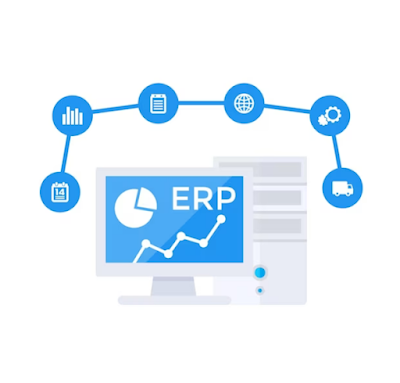How to Choose the Right ERP Deployment Model for Your Business
What is ERP Deployment Model?
ERP deployment model refers to how the software is installed and maintained in an organization. There are four types of ERP deployment models:
1. On-Premises: On-premises deployment involves installing the ERP software on your company's servers and managing it internally. It provides complete control over the system and data, but it requires a significant upfront investment and ongoing maintenance costs.
2. Cloud-Based: Cloud-based deployment involves hosting the ERP software on a vendor's cloud infrastructure. This model provides flexibility, scalability, and lower upfront costs. However, it may have limitations in terms of customization and data control.
3. Hybrid: Hybrid deployment involves a combination of on-premises and cloud-based deployment. It offers the best of both worlds, allowing you to keep sensitive data on-premises and use cloud-based solutions for scalability and flexibility.
4. Managed Services: Managed services deployment involves outsourcing the management of the ERP system to a third-party provider. This model provides businesses with the benefits of a cloud-based system without the need for internal IT resources.
Factors to Consider When Choosing an ERP Deployment Model
1. Budget: The cost of the ERP deployment model is an important factor to consider. On-premises deployment can be more expensive due to upfront investment and ongoing maintenance costs. Cloud-based deployment may have lower upfront costs, but ongoing subscription fees can add up over time.
2. Security: Depending on the industry and the nature of your business, security may be a critical concern. On-premises deployment provides greater control over data security, while cloud-based deployment may have more robust security features.
3. Customization: Depending on the unique needs of your business, customization may be necessary. On-premises deployment allows for greater customization, while cloud-based deployment may have limitations.
4. Scalability: As your business grows, scalability becomes an important consideration. Cloud-based deployment offers greater scalability, while on-premises deployment may have limitations.
5. IT Resources: Consider the size and expertise of your IT department. On-premises deployment requires internal IT resources to manage and maintain the system, while cloud-based deployment may require fewer internal resources.
6. Accessibility: Depending on the needs of your business, accessibility may be important. Cloud-based deployment allows for greater accessibility from any location with an internet connection, while on-premises deployment may be limited to on-site access.
Conclusion
Choosing the right ERP deployment model for your business requires careful consideration of your unique needs and requirements. Whether you choose on-premises, cloud-based, hybrid, or managed services deployment, it is important to select a model that provides the scalability, security, customization, and accessibility necessary for your business to succeed. With a thorough understanding of the different ERP deployment models and factors to consider, you can make an informed decision that aligns with your business objectives and budget.




Comments
Post a Comment